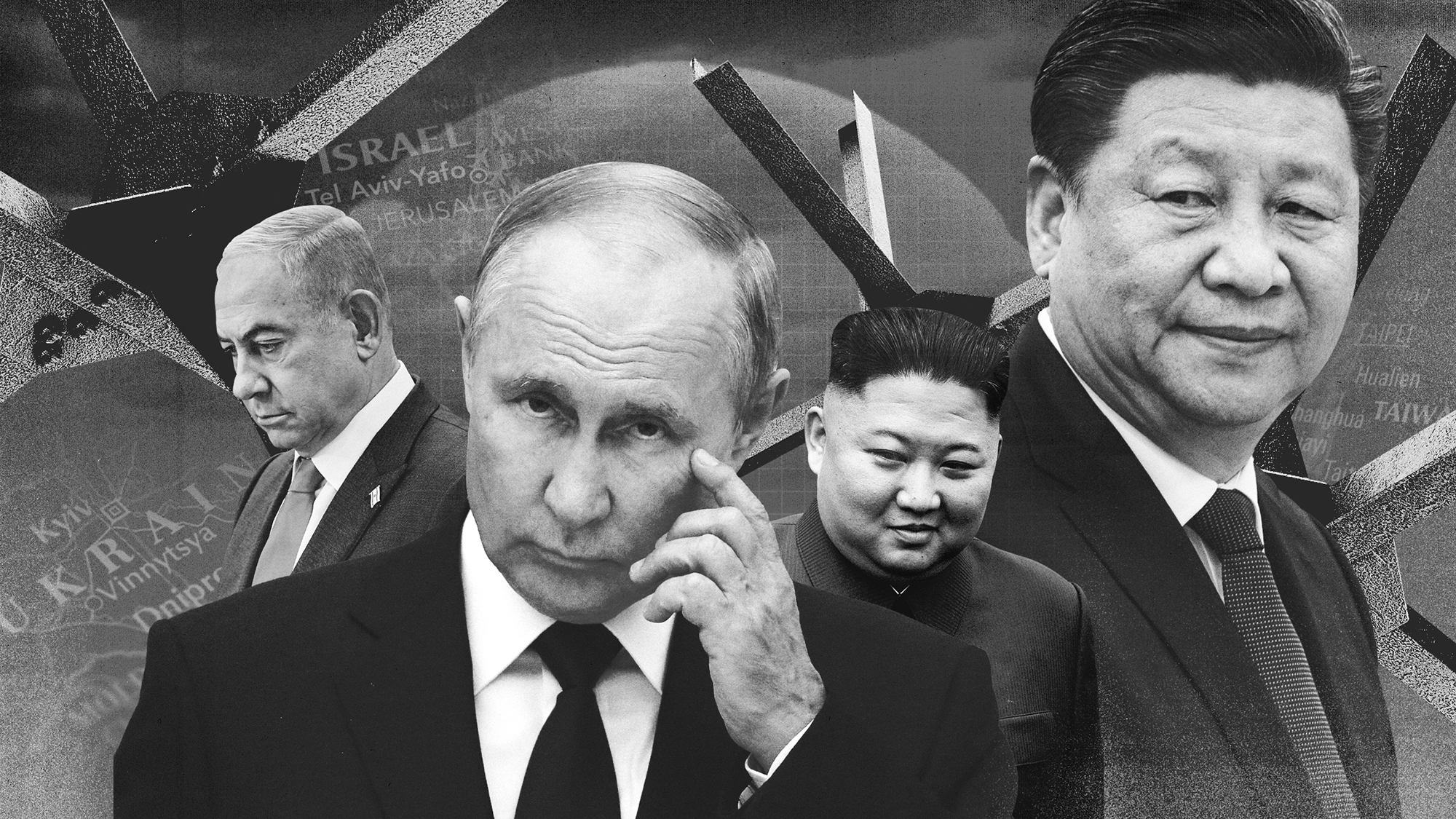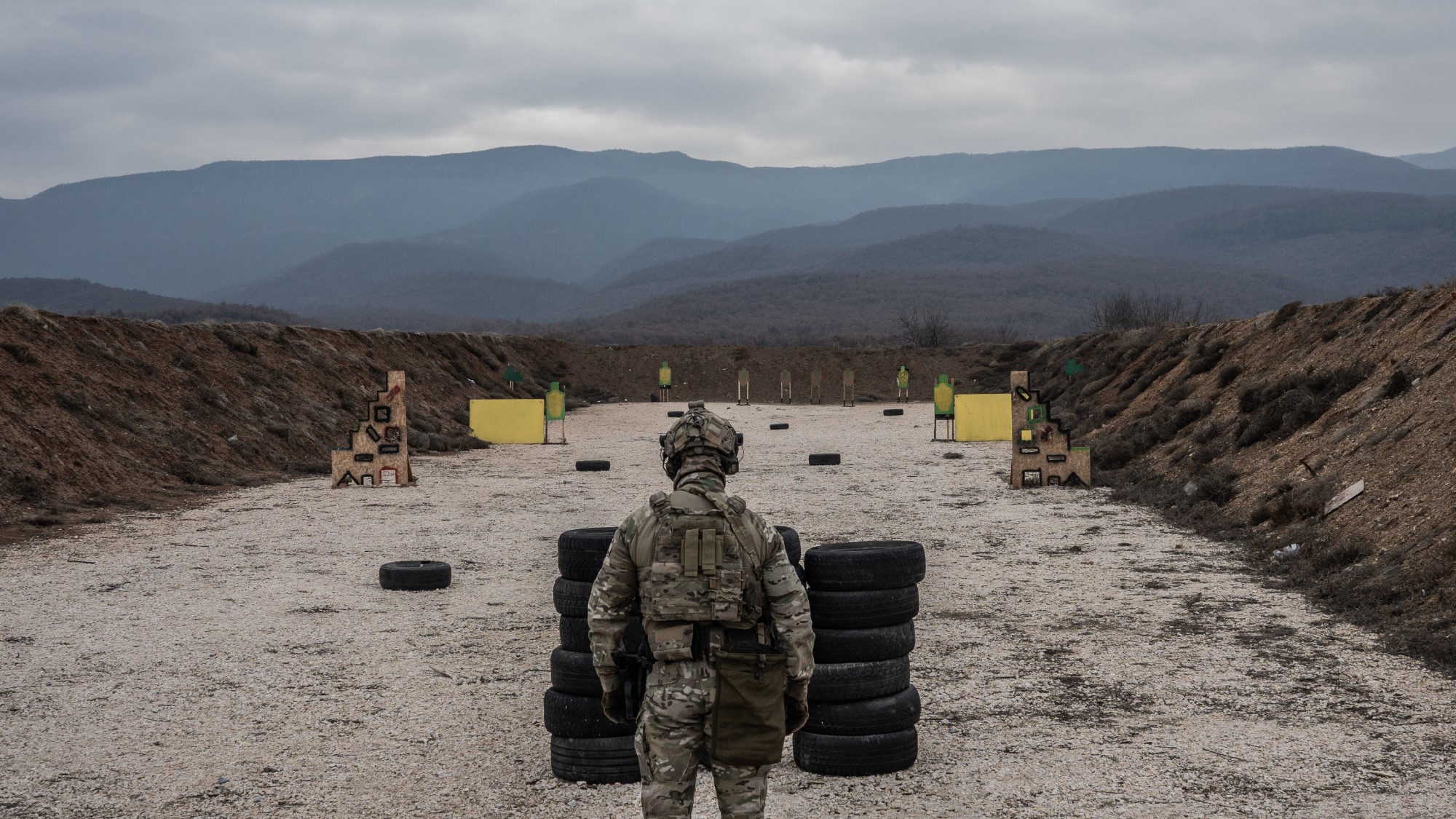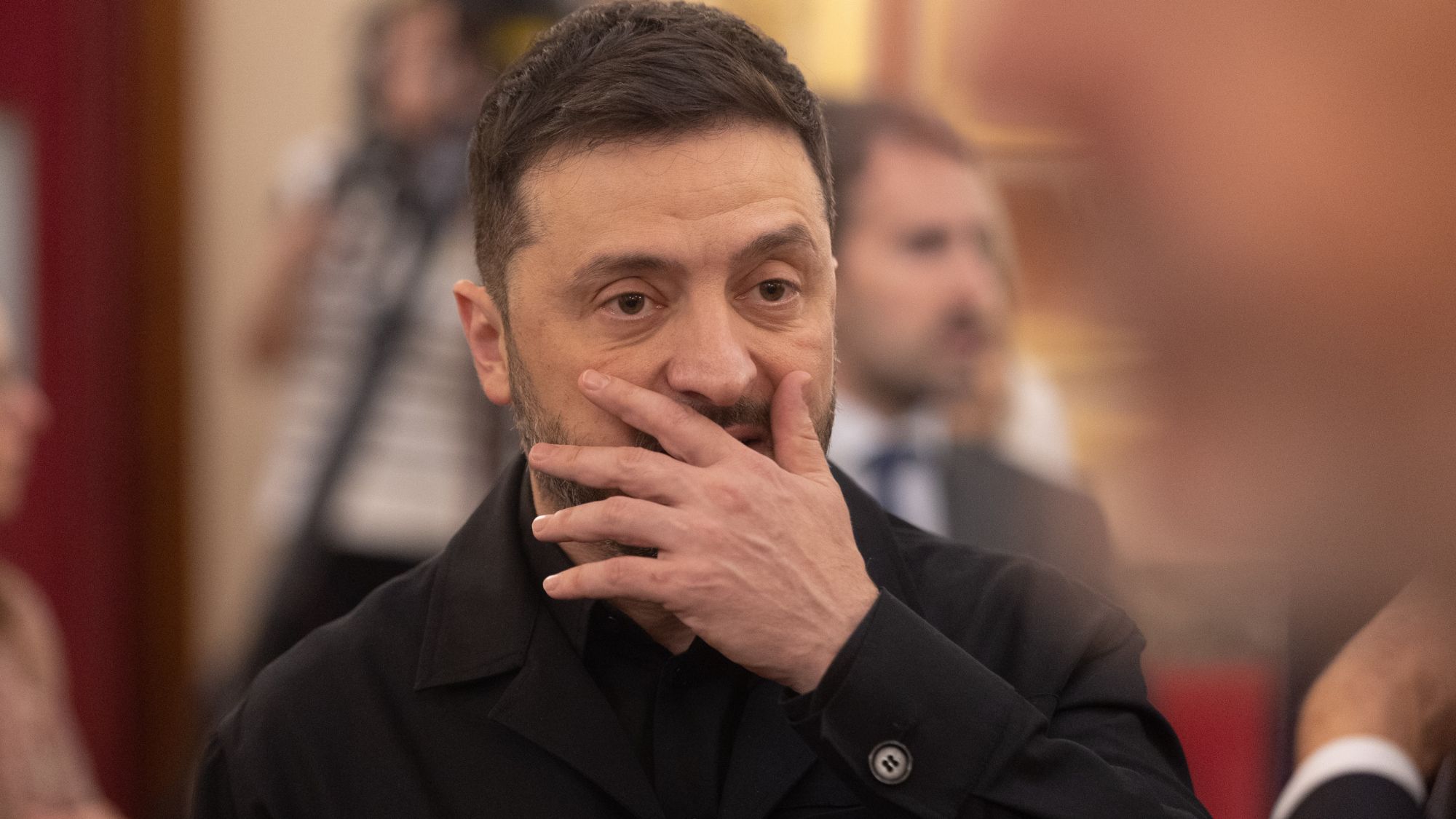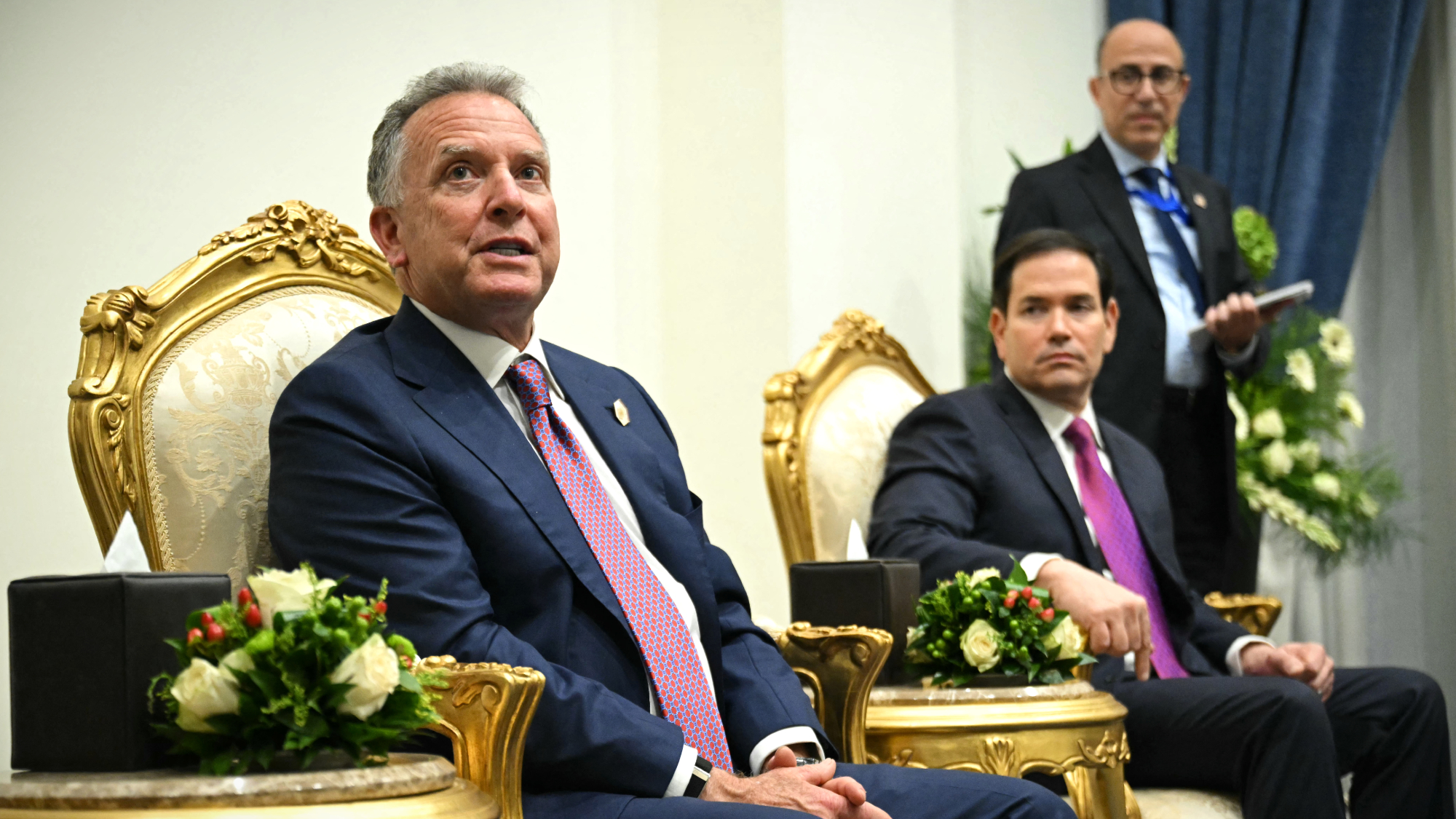Are we close to World War Three?
European leaders fear appeasing Russia in Ukraine will embolden Putin and encourage China’s ambitions over Taiwan

European leaders have warned that forcing Ukraine to accept peace terms favourable to Russia may set a “concerning precedent” that other authoritarian regimes will follow, said Politico.
Western allies have reacted with horror to Donald Trump’s 28-point peace plan to end the war in Ukraine, which has been described as a Kremlin wish-list. The plan, which Kyiv has agreed in “essence”, would hand Russia massive concessions including control of swathes of Ukrainian territory, a reduced Ukrainian military, and a block on the country joining Nato in the future.
With Ukraine’s government rocked by a corruption scandal and morale across the country sinking lower, and Kremlin forces continuing to carry out deadly air strikes and making slow but steady gains on the battlefield, both Trump and Vladimir Putin sense now is the time to force Ukraine’s President Volodymyr Zelenskyy to the table.
The Week
Escape your echo chamber. Get the facts behind the news, plus analysis from multiple perspectives.

Sign up for The Week's Free Newsletters
From our morning news briefing to a weekly Good News Newsletter, get the best of The Week delivered directly to your inbox.
From our morning news briefing to a weekly Good News Newsletter, get the best of The Week delivered directly to your inbox.
The fear in Europe is that this will “only embolden Russia’s military efforts in the region” and “encourage” Putin to “attack Nato next”. European officials “do not think Putin’s ambitions end with Ukraine”.
Russia
Putin has until now been happy to stall on peace talks as Kremlin forces make slow but steady gains in Ukraine. A second meeting between the Russian president and Donald Trump, due to take place in Budapest, has been delayed indefinitely. Meanwhile, Moscow continues to launch drone strikes on Kyiv and, over the past month, has even begun to test Nato defences and resolve with a series of airspace incursions into Estonia, Romania and Poland.
This prompted the Polish PM to warn that his country was at its “closest to open conflict since the Second World War”, while a statement from Nato said the violations were “part of a wider pattern of increasingly irresponsible Russian behaviour”, with actions that are “escalatory, risk miscalculation and endanger lives”.
In a sign of the growing fear that an attack could be imminent, Estonia, Latvia and Lithuania, as well as Poland and Finland, have announced they are withdrawing from a landmark landmine treaty as they seek to shore up their border defences with Russia. There have also been renewed efforts to revive a Baltic “bog belt” along Nato’s eastern flank to protect Europe from Russia.
A free daily email with the biggest news stories of the day – and the best features from TheWeek.com
While the Baltic states are the most likely target for a Russian invasion, Moscow has also begun ramping up production of hypersonic missiles. The intermediate-range weapons “are capable of striking targets up to 3,415 miles away, which puts locations across Europe and even the western US within their potential reach”, said The Economic Times.
The successful test of the Burevestnik nuclear-powered cruise missile – nicknamed the “Flying Chernobyl” because it emits radioactive exhaust from its unshielded reactor – is yet another escalation. The test on 21 October saw the missile fly for 15 hours non-stop and cover a distance of 14,000 km (8,700 miles) but its true range could be “unlimited”, Putin said. The Russian president's claim to now have the “highest level” nuclear arsenal in the world is a “chilling World War Three warning”, said The Mirror.
If Russia takes military action against any Nato member state, it would force the military alliance into an all-out conflict. In that scenario, Russia could call on its allies to join in a global war. “Serious analysts express concern that Russia may escalate and the world, as it has done so many times in the era of mass warfare, may sleepwalk its way into an engulfing conflict,” said The New Statesman.
In reality, the likely threat from Russia is not a “full-scale invasion” but a “test: something ambiguous and tricky that will divide Nato, and thus discredit it”, said Edward Lucas in The Times. Some believe the recent drone and jet incursions are designed to do just that but, with Russia’s new supersonic missiles able to stretch from Moscow to any point in Europe, we are all on “the eastern flank now”.
China
Trump’s 28-point Ukraine peace plan has also drawn criticism on the other side of the world, with a senior Taiwanese military officer warning a Russian victory will only embolden China’s moves against the breakaway island. Addressing the Warsaw Security Forum, Hsieh Jih-sheng, deputy chief of the general staff for intelligence at Taiwan’s defence ministry, said: “If China moves on Taiwan while Russia increases its offensive in Ukraine, the world could face a two-front geopolitical crisis.”
It has long been assumed that the greatest threat to geopolitical stability is rising tension between China and the US, But while attention is currently fixed on trade between the two nations, most analysts expect a future military confrontation to centre on Taiwan. Beijing sees the island nation as an integral part of a unified Chinese territory. It has, in recent years, adopted an increasingly aggressive stance towards the island. It has denounced Taiwan’s ruling Democratic Progressive Party, which won an unprecedented third term last year, as dangerous separatists. At the same time, the US has ramped up its support – financially, militarily and rhetorically – for Taiwan’s continued independence.
Earlier this year, the People’s Liberation Army (PLA) conducted live-fire military exercises in the Taiwan Strait, drills seen as a “dress rehearsal for a possible real blockade in an attempt to overthrow the government in Taipei in the future”, said the BBC.
This year, China has “held live-fire drills on the doorsteps of Australia, Taiwan and Vietnam”, tested new landing barges on ships that “could facilitate an amphibious assault on Taiwan”, and unveiled deep-sea cable cutters “with the ability to switch off another country’s internet access – a tool no other nation admits to having”, said The Guardian.
Many observers anticipate that China will look to invade Taiwan by 2027, which is seen as a “magical” year because it marks the centenary of what was to become the PLA, said Robert Fox in London’s The Standard. The idea that this anniversary could coincide with a serious military operation by Beijing has become a “fixation” in Washington, said Defense News.
If there’s one ally almost every Republican in Washington wants to defend, it’s Taiwan against China, said Time. Beijing knows a full-scale invasion of Taiwan would “risk direct war with the US”.
To this end, China will be looking to expand its estimated 600 fielded nuclear warheads to compete with Russia and the US, Dr Sidharth Kaushal, from the Royal United Services Institute think tank, told The i Paper.
“This will make things even more complex for the US, because it will face the prospect theoretically of a China-Russian alliance that has more nuclear weapons than it does.”
Politicians, military chiefs and industry leaders “can no longer afford to ignore the prospect of a full-scale invasion”, said the Daily Mail. In such a scenario, the US – Taiwan’s most powerful protector – may be forced to respond in its defence. It would “shake the foundations of the world as we know it and could well trigger a third world war”.
Middle East
Trump may have declared a “historic dawn of a new Middle East” but just a month after the Gaza ceasefire came into effect, both Israel and Hamas continue to engage in sporadic fighting.
The US president has vowed to use all his power to ensure that Israel recognises it has achieved “all that it can by force of arms” and begin an age of cooperation that may ultimately extend as far as reconciliation with Iran.
It is a head-spinning change of tone from this summer, when, for a few days, it looked as though the war between Israel and Iran would explode into an all-out regional conflict, dragging in the US and Western allies on one side, and potentially Russia and China on the other.
While both sides backed down following a frantic 24 hours in which the US launched air strikes against Iran’s nuclear facilities, the threat from Tehran’s nascent nuclear programme remains “heightened”, said Paul Ingram, research affiliate for the Centre of Existential Risk at the University of Cambridge, told the The i Paper.
Claims by Trump to have eliminated the regime’s nuclear capabilities for the foreseeable future were quickly debunked by the Pentagon. And with Iran still holding 440kg of highly enriched uranium, “it all adds up to quite a dangerous situation where their capacity has been marginally degraded, but the incentives for Iran to go nuclear have gone through the roof”.
The weakening of Hezbollah in Lebanon, the fall of the Assad regime in Syria and now the potential decommissioning of Hamas mean Iran has lost much of its proxy influence across the region. Combined with the short-lived Israel-Iran war “calls within Tehran to develop nuclear deterrence will have massively increased”, said Ingram.
North Korea
South Korean President Lee Jae Myung this week warned that the north and south of the peninsula are in a “very dangerous situation”, with an accidental clash possible at any time.
In comments quoted by Yonhap News, Lee said North Korea has refused to answer calls by Seoul to establish contact and at the same time put up barbed wire fences along the military border, something that has not been done since the end of the Korean War.
“There have been more than 10 border intrusions by North Korean soldiers this year,” said Reuters, “some leading to South Korean troops firing warning shots under an established protocol.”
Since the start of last year North Korean leader Kim Jong Un has slowly moved the hermit kingdom away from “the idea of a peaceful unification” with South Korea, said The Associated Press. South Korea has since scrapped a 2018 non-hostility pact aimed at lowering military tensions.
“Kim’s government has repeatedly dismissed calls by Seoul and Washington to restart long-stalled negotiations aimed at winding down his nuclear weapons and missiles programmes, as he continues to prioritise Russia as part of a foreign policy aimed at expanding ties with nations confronting the US,” said The Independent.
North Korea has sent thousands of troops and weapons to fight in Ukraine, a move that “has raised concerns Moscow could provide technology that strengthens Kim’s nuclear-armed military”.
In April, North Korea conducted the first test-firing of the weapons system of its new 5,000 tonne “Choe Hyon-class” destroyer, according to state media KCNA. The new warship can apparently launch nuclear-capable ballistic missiles, and that, security and defence analyst Michael Clarke told Sky News, “shows the level of their ambition”.
Around the same time, South Korea said its soldiers had fired warning shots at North Korean troops who had crossed the demarcation line between the two nations – some of whom were armed.
Dr Sean Kenji Starrs, lecturer in international development at King’s College London, told the Daily Mail that “the more likely scenario” than North Korea invading South Korea would be China “encouraging or pressuring” it to do so “in order to expel US troops”. That would “open a new front against the US so that China could more easily take Taiwan”.
-
 How the War Department became the Department of Defense – and back again
How the War Department became the Department of Defense – and back againIn Depth In 1947 President Harry Truman restructured the US military establishment, breaking with naming tradition
-
 Codeword: December 8, 2025
Codeword: December 8, 2025The daily codeword puzzle from The Week
-
 Sudoku medium: December 8, 2025
Sudoku medium: December 8, 2025The daily medium sudoku puzzle from The Week
-
 Is Europe finally taking the war to Russia?
Is Europe finally taking the war to Russia?Today's Big Question As Moscow’s drone buzzes and cyberattacks increase, European leaders are taking a more openly aggressive stance
-
 China’s single mothers are teaming up
China’s single mothers are teaming upUnder the Radar To cope with money pressures and work commitments, single mums are sharing homes, bills and childcare
-
 Pushing for peace: is Trump appeasing Moscow?
Pushing for peace: is Trump appeasing Moscow?In Depth European leaders succeeded in bringing themselves in from the cold and softening Moscow’s terms, but Kyiv still faces an unenviable choice
-
 The $100mn scandal undermining Volodymyr Zelenskyy
The $100mn scandal undermining Volodymyr ZelenskyyIn the Spotlight As Russia continues to vent its military aggression on Ukraine, ‘corruption scandals are weakening the domestic front’
-
 Trump pushes new Ukraine peace plan
Trump pushes new Ukraine peace planSpeed Read It involves a 28-point plan to end the war
-
 Why these Iraqi elections are so important
Why these Iraqi elections are so importantThe Explainer The US and Israel are increasingly pressuring Baghdad to tackle Iran-backed militants, while weakened Iran sees Iraq as a vital remaining ally
-
 Israel arrests ex-IDF legal chief over abuse video leak
Israel arrests ex-IDF legal chief over abuse video leakSpeed Read Maj. Gen. Yifat Tomer-Yerushalmi had resigned from her post last week
-
 France’s ‘red hands’ trial highlights alleged Russian disruption operations
France’s ‘red hands’ trial highlights alleged Russian disruption operationsUNDER THE RADAR Attacks on religious and cultural institutions around France have authorities worried about Moscow’s effort to sow chaos in one of Europe’s political centers